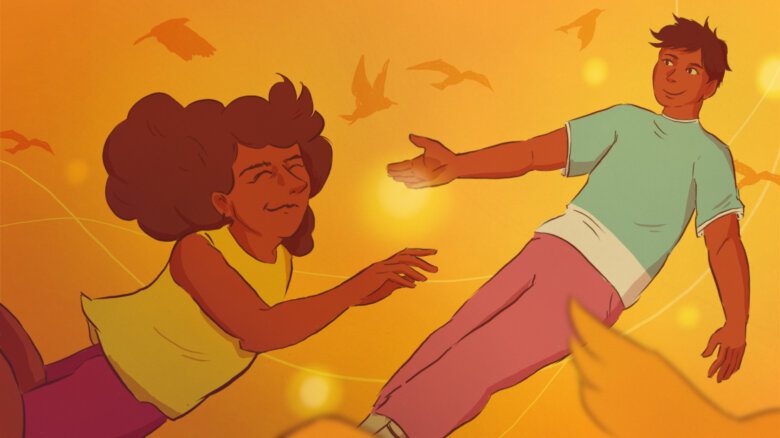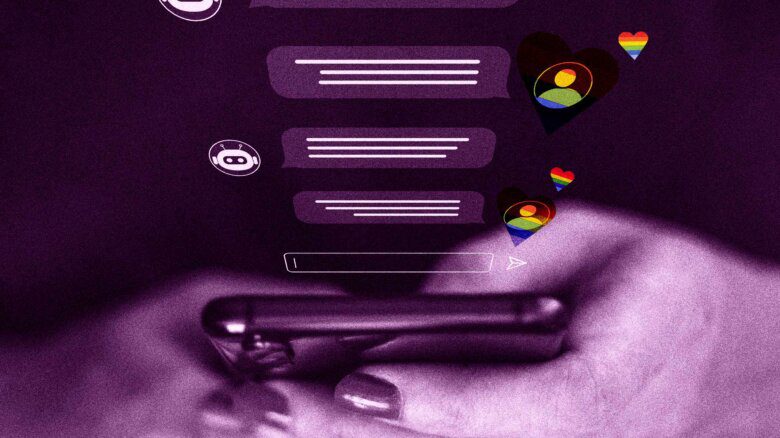Sometime this summer I met a very cute guy with Botticelli curls, a tight body and a T-shirt that ended considerably short of where his jeans began.
The T-shirt rode up, the jeans slipped down, and I had a great view of his perfect, polished ass. In short, he was perfectly packaged, so much so, in fact, that I almost failed to notice what was apparently the most significant part of his costume.
Annoyed at my stupidity, he pointed to some leather bracelets on his right arm (or was it his left?) and told me in no uncertain terms that this was the international sign for bottom. Who knew? I thought he’d just bought some new bangles from H&M. The message, in any case, seemed a trifle redundant. The low-slung jeans told me everything I needed to know.
I’m no big fan of words. They’re as prone to misinterpretation as any other form of human communication. But whenever I’m confronted with some of the more arcane systems we homos use to signal identity and interest I always have to wonder: Wouldn’t it be easier just to say hello?
I’ve never mastered the various hanky codes signalling fisting and watersports and what-not. As for the correlation between top/bottom and left/right that’s always seemed like a recipe for social disaster. Years ago (and maybe this still pertains), left meant bottom on one coast and top on the other and I could never remember which was which. Easier, I thought, to flip them over and see what happens.
Whether you’re looking for simple gayness or specific sexual tastes, it’s easy to become confused. Our much-vaunted gaydar doesn’t always work (especially if the context is ambivalent or the other person isn’t interested) and the “pings” it does pick up change with time, place and cultural valuations.
Signs that once seem incontrovertible, like overplucked eyebrows and rouged cheeks, now look more like mistakes. Somebody got carried away at the cosmetics counter. Others that were once intractably gay, like the moustache in 1970s clone culture, now read as their opposite. See the shaggy handlebar on Colin Farrell in Miami Vice. It looks like a small bird flew into the cab of a Mack truck and then got stuck on the driver.
Poodles, remarks a character in the film Boys In The Band, are the “insignia” of homos’ “deviation,” but poodles were once the province not of gay men but of 19th-century Parisian lesbians, supposedly because of the use to which frustrated dykes sometimes put their lap dogs.
That telling little anecdote comes from Graham Robb’s Strangers, a witty tour of 19th-century gay life that really makes you realize how important nonverbal markers were in a time of silence and oppression. Homos were far more active in the 19th century than commonly thought, argues Robb, but also harder to find and signals of billboard-like bluntness were pretty much a necessity.
There were various, if not subcultures, then loose traditions and networks but, lord, it must have been difficult to penetrate them. The codes governing, regulating and advertising their existence — green carnations, red ties, etc — were far more complicated than the current hanky codes.
Even recognizing homos in literature required a rather recherché knowledge of classical history and literature. Robb himself points out an important allusion to Sappho in an early German novel called Venus Urania (1798), but would anyone else get it?
“References to homosexuality [in 19th-century literature] were carefully encrypted,” writes Robb, “and are becoming less decipherable as time passes.” To identify the gayness of a character in a Walter Scott novel, for instance, you need to know the significance of the Lex Julia, an ancient Roman law proscribing fines for male homosexual intercourse. I don’t know about you but that was one lesson my teachers skipped.
In fact the best argument for a widely understood language of signs and symbols is tradition. If we don’t understand ancient innuendos we’ll lose the key to our own past. Robb’s book is a terrific potted tour of Naples, Capri, Frederick The Great, Ganymede, Antinous and dozens of other homo references. By the time you’ve finished reading the book you’ll want to know more about all of them, if only because they’ll allow you to meet compatible strangers in the past.
Literature aside, however, I can’t see the point of complicating our existence. It’s one thing to search the past for clues to a gay tradition. It’s quite another to spread them unnecessarily in the present.
Our lives are quite complicated enough and people, it sometimes seems, will got to any length to avoid stating the obvious. I’ve never forgotten an ex-trick who decided to renew our acquaintance by wagging his dick at a downtown urinal.
“What’s with the ritual symbolism?” I wondered. “I’ve already seen it.”
The whole dick-wagging thing always seems a bit crude, but here it also seemed unnecessarily mysterious. We’d already met, twice at least. Why not just say hello?
 Why you can trust Xtra
Why you can trust Xtra


